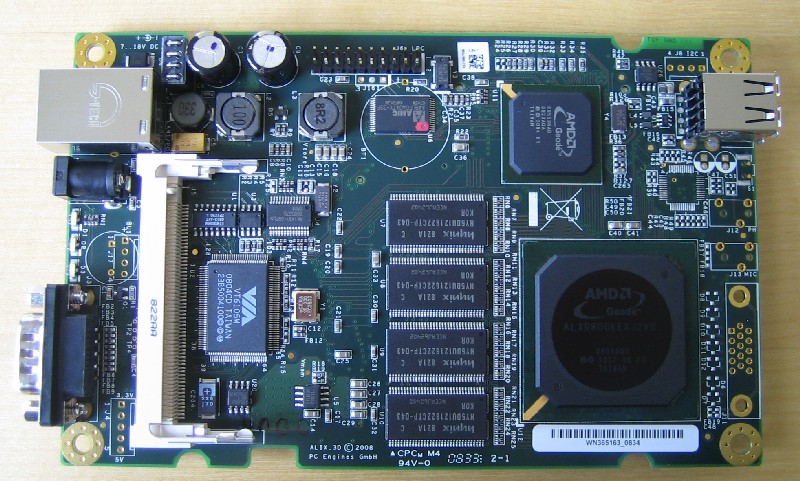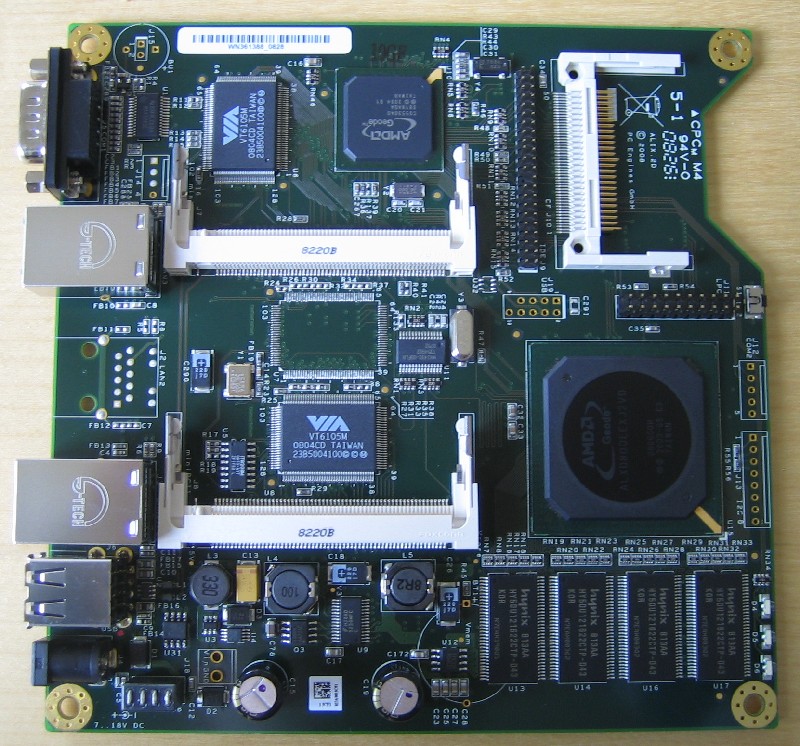I did post about this on the Head-Fi forums a while back. I'm trying to figure out if there would be any interest in this type of setup. I would be happy to take any suggestions or answer any questions.
I decided to build a custom Linux based music server that was low-powered and completely silent. This, after being unsatisfied with most small PC's. All FLAC files are stored on my bedroom PC which is acting as NFS file server. The living room is a dedicated listening room. This server has been very stable for the last six months and sounds better than my Theta Data Basic transport; something I was not expecting.
The hardware is an off the shelf single board computer from PC Engines:
http://www.pcengines.ch/These are primarily designed as firewall/router/radio wifi solutions. Last year, the PC Engines designer started adding USB ports to several of his boards. I have experience using one of his older WRAP boards with open source Monowall (
http://m0n0.ch/wall/) firewall software. I currently have months --and sometimes a year of uptime-- on this combo with nary an issue; being only powered down when I go on vacations.
I'm currently using two versions of hardware:
My original board:
http://www.pcengines.ch/alix3c2.htm
The board I'm currently experimenting with:
http://www.pcengines.ch/alix2d2.htmThis board has all connectors on the back which would look neater and nicer on an audio rack. There's also an extra ethernet port which could be put to use in the future.

Software stack:
Music Player Daemon (
http://mpd.wikia.com/wiki/Music_Player_Daemon_Wiki). Based on the client server model. The MPD daemon runs on the ALIX, and the music is controlled by a client on another machine. Currently I either use a Nokia N800 tablet via WiFi, but I can also have a client running on the bedroom computer, or my Thinkpas laptop, all running at the simultaneously.
Operating System: Voyage Linux (
http://linux.voyage.hk/) A version of Debian Linux that has been stripped down and modified to run from a compact flash card and load into RAM. No hard disk required. The major plus with Voyage Linux is that it keeps the apt packaging system; MPD being as easy to install as typing apt-get install mpd.
As a Linux user for the last ten years, it wasn't difficult to get things up and running. Took about 2 hours. Voyage Linux has scripts to copy an image to a compact flash, after which you SSH into the alix and apt-get the required packages: ALSA, MPD, NFS client. A simple editor is needed to configure a few configuration files: fstab for NFS partitions and mpd.conf. ASLA is configured with no mixers, and the configuration is for direct output via the USB sound module. MPD is also configured to buffer each song %100 to RAM before playing.
Sound: Initially feeding a Trends Audio UD-10 -> Merdian 518 (jitter reduction and 20 bit padding) -> Adcom GDA-700 HDCD DAC. Now it's feeding a Wavelength Audio Brick. Noticeably better than my Theta Data Basic transport, something I was not expecting as I was initially putting this thing together so I would not have to change CD's when I was cooking.
Benefits:
Low cost: Boards are $125 or $137 USD.
Dead silent: Fanless Geode based x86 CPU.
Reduced EMI: Industrial quality design. These two boards don't have any superfluous components such as VGA or keyboard/mouse.
Mini-PCI slots: Can be used with wireless cards. (I'm personally sticking with a wired ethernet connection)
Low power consumption: 3 watt load on my Kill-A-Watt meter when playing FLAC files.
Runs Linux: Open source design. No need to run a GUI on the server. Can be stripped down to run a minimum amount of superfluous services, unlike Windows or Mac OS X.
Multiple MPD clients available: Windows, Mac OS X, Linux, bluetooth, phones, web based, etc.
The only real negative is the configuration. Most audiophiles are either accustomed to using Windows or Mas OS X. Linux might be a real hurdle for them, especially in putting something like this together; basically a headless Linux server. But...
I'm currently researching ways to add a Web GUI front end. Something along the lines of configuring a Netgear router. Ideally, one would download a pre-configured Voyage Linux image and copy that to a blank compact flash card. Pop the CF card into the Alix board, power it up, and point your browser to a specific IP address and login. From there, one would configure MPD (location of music files, state file, database, and play list files), NFS or SAMBA, and other options.
Any interest, questions, or suggestions?